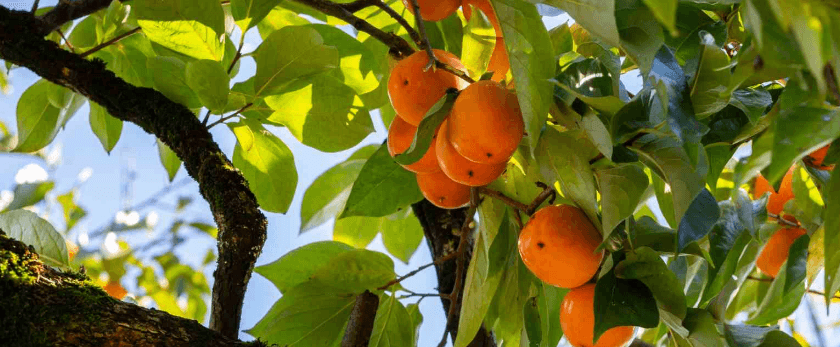Persimmons are a delicious and nutritious fruit that can be grown in your own backyard. Not only are they a tasty addition to your diet, but they also have a positive impact on the environment. Persimmon trees are low maintenance and can thrive in a variety of climates, making them a great choice for any home garden. In this article, we will discuss how to care for persimmon trees, the best time to grow them, and common problems you may encounter.
How to Care for Persimmon Trees
Watering
Persimmon trees require regular watering, especially during the first few years of growth. They prefer well-drained soil, so make sure to water deeply but infrequently. This will encourage the roots to grow deeper into the soil, making the tree more resilient to drought. During the summer months, water your persimmon tree once a week, and reduce watering in the fall and winter.
Light
Persimmon trees thrive in full sun, so make sure to plant them in an area that receives at least 6-8 hours of sunlight per day. If you live in a hot climate, consider providing some shade during the hottest part of the day to prevent sunburn on the leaves.
Soil
Persimmon trees can grow in a variety of soil types, but they prefer well-drained, slightly acidic soil. If your soil is too alkaline, you can add sulfur or peat moss to lower the pH. It is also important to ensure that the soil is rich in organic matter, so consider adding compost or aged manure to the planting hole.
Fertilizer
Persimmon trees do not require a lot of fertilizer, but a balanced fertilizer can help promote healthy growth. Apply a slow-release fertilizer in the spring, and avoid fertilizing in the fall as it can stimulate new growth that may be damaged by frost.
Pruning
Pruning is essential for the health and productivity of persimmon trees. It is best to prune in late winter or early spring before the tree starts to grow new leaves. Remove any dead, damaged, or diseased branches, as well as any crossing or rubbing branches. This will improve air circulation and sunlight penetration, leading to healthier fruit production.

Best Time to Grow Persimmon Trees
The best time to grow persimmon trees is in the late fall or early spring when the tree is dormant. This allows the tree to establish its root system before the hot summer months. If you live in a colder climate, it is best to plant in the spring to give the tree enough time to establish itself before the winter.
Common Problems with Persimmon Trees
Pests
Persimmon trees are relatively pest-free, but they can be susceptible to aphids, scale insects, and mealybugs. These pests can be controlled with insecticidal soap or neem oil. It is important to monitor your tree regularly and take action at the first sign of an infestation.
Diseases
The most common disease that affects persimmon trees is crown gall, which is caused by a bacteria that enters the tree through wounds. To prevent this, make sure to prune your tree properly and avoid damaging the bark. If your tree does develop crown gall, it is best to remove and destroy the affected branches.
Fruit Drop
Fruit drop can occur for a variety of reasons, including inadequate pollination, lack of water, or extreme temperatures. To prevent this, make sure to plant a variety of persimmon trees to ensure proper pollination, water regularly, and provide some shade during hot weather.
Conclusion
Growing persimmon trees is a rewarding experience that not only provides delicious fruit but also has a positive impact on the environment. By following these care tips and being aware of common problems, you can successfully grow persimmon trees in your own backyard. Remember to always use responsible disposal methods for any pesticides or fertilizers to ensure a sustainable future for our planet. Happy growing!










